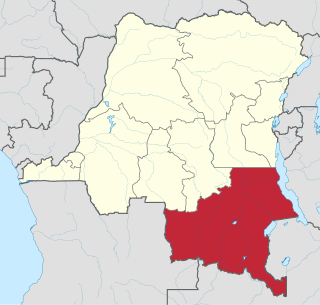
Acalypha is a genus of flowering plants in the family Euphorbiaceae. It is the sole genus of the subtribe Acalyphinae. It is one of the largest euphorb genera, with approximately 450 to 462 species. The genus name Acalypha is from the Ancient Greek ἀκαλύφη (akalúphē) ("nettle"), an alternative form of ἀκαλήφη (akalḗphē), and was inspired by the nettle-like leaves. General common names include copperleaf and three-seeded mercury. Native North American species are generally inconspicuous most of the year until the fall when their stems and foliage turn a distinctive coppery-red.

Tragia is a genus of flowering plants in the spurge family, Euphorbiaceae. It is widespread across North and South America, Africa, the Arabian Peninsula, the Indian Subcontinent, northern Australia, and to various islands in the Caribbean and in the Indian Ocean.

Acalypha rubrinervis is an extinct plant in the spurge family (Euphorbiaceae), from the island of Saint Helena in the South Atlantic Ocean. It was called string tree on account of the thin pendulous inflorescences which resembled red strings. Disturbance following human settlement on the island destroyed its habitat and it was last seen in the 19th century. It is thus one of a number of island plants to have been driven to extinction by human activity.
Acalypha padifolia is a species of flowering plant in the family Euphorbiaceae. It is native to the Andes in Bolivia, Colombia, Ecuador, and Peru. It is a shrub or small tree that grows in mountain rainforests.
Acalypha dictyoneura is a species of flowering plant in the family Euphorbiaceae. It is endemic to Ecuador, where it grows in the cloud forests of the Andes. There are six known populations.
Acalypha ecuadorica is a species of plant in the family Euphorbiaceae. It is endemic to Ecuador. Its natural habitat is subtropical or tropical dry forests.
Acalypha eggersii is a species of plant in the family Euphorbiaceae. It is endemic to Ecuador. Its natural habitat is subtropical or tropical dry forests.
Acalypha hontauyuensis is a species of plant in the family Euphorbiaceae. It is a shrub endemic to Orchid Island, Taiwan. The Flora of China, however, lists it as a synonym of Acalypha suirenbiensis from the Taiwanese mainland.
Acalypha raivavensis is a species of plant in the family Euphorbiaceae. It is endemic to French Polynesia.
Acalypha suirenbiensis is a species of plant in the family Euphorbiaceae. It is endemic to Hualien County, Taiwan. The Flora of China, however, includes Acalypha hontauyuensis from Orchid Island in this species. It is a shrub growing about 3 m (10 ft) tall.
Acalypha tunguraguae is a species of plant in the family Euphorbiaceae. It is endemic to Ecuador. Its natural habitat is subtropical or tropical moist montane forests.
Beauprea congesta is a species of plant in the family Proteaceae. It is endemic to New Caledonia.
Stenocarpus villosus is a species of plant in the family Proteaceae. It is endemic to New Caledonia. It is threatened by habitat loss.

Acalypha dikuluwensis was a 25 centimetres (9.8 in) high tropical flowering plant in the genus Acalypha of the family Euphorbiaceae. The IUCN Red List of Threatened Species declared the plant extinct in 2012. A. dikuluwensis was endemic to copper-rich soils of eastern Katanga Province of the Democratic Republic of the Congo, and was only found around Dikuluwe. The soils are derived from Katanga Supergroup Upper Cambrian Roan Group rocks. It was restricted to steppic savanna in copper outcrops, which were destroyed by surface mining. No specimens were found after 1959.
Acalypha cupricola is a species of spurge native to the copper-rich soils of Katanga Province in the Democratic Republic of the Congo. It is an absolute metallophyte, restricted to steppic savanna in copper outcrops. Surface mining is destroying some of its habitat, but it is not considered to be fragmented, and so is listed as Near Threatened by the IUCN. It can also be found growing in other metalliferous habitats, such as mine debris and lands disturbed by mining. This species is a candidate for use in phytoremediation of metal-contaminated sites.
Acalypha wilderi was a species of spurge that was only known from forested habitats along the northern and western sides of Rarotonga in the Cook Islands, at elevations of 200–300 m. Very little is known about this species, but collections suggest it was a small shrub rarely exceeding 2 m in height. Its habitat has been greatly modified for agriculture, roads, housing, plantations and invasive species, and has not been seen since 1929, and was declared extinct in 2014. This species may be synonymous with A. raivavensis and A. tubuaiensis.

Mangora acalypha, also known by its common name cricket-bat orbweaver, is a species of spider in the family Araneidae, found throughout the Palearctic realm. This species was originally described by Charles Athanase Walckenaer in 1802 as Aranea acalypha.

Acalypha virginica, commonly called Virginia threeseed mercury or Virginia copperleaf, is a plant in the spurge family (Euphorbiaceae). It is native to the eastern United States. It is found in a variety of natural habitats, particularly in open woodlands and along riverbanks. It is a somewhat weedy species that responds positively to ecological disturbance, and can be found in degraded habitats such as agricultural fields.

Acalypha chamaedrifolia, the red cat's tail, is a species of flowering plant in the family Euphorbiaceae, native to southern Florida and the islands of the Caribbean. It performs best in a loam-less potting mixture. As its synonym Acalypha hispaniolae it gained the Royal Horticultural Society's Award of Garden Merit in 2002, but this seems to have been revoked.







